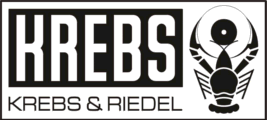Tech Talk

I am losing wheel form during a vitrified-Al203 grinding operation. My wheel salesman suggests “going harder.” Does that mean CBN? There aren’t any burn problems, but the profile keeps breaking down. What should I do?
If you have the time and money, cubic boron nitrate is an option worth considering. But don’t confuse a hard abrasive with a hard wheel. When the salesman suggested going harder, he probably meant selecting a harder wheel grade. It’s important to understand the concept of wheel grade, which is a measure of the strength of the bond holding the abrasive grits in place. It’s often referred to as “wheel hardness,” which can be misleading because it has nothing to do with the hardness of the abrasive grits. A vitrified-bond wheel has three constituents: abrasive grits, bond material and porosity. The grade refers to the relative ratio of bond material to porosity for a fixed abrasive content. Lower-grade wheels, such as those designated as H, I and J, have less bond material and, therefore, are more porous. This makes them act softer. Higher-grade wheels, such as P, Q and R grades, have more bond material and are less porous, making them act harder. Resin-bond wheels, however, have almost no natural porosity, so the wheel grade is determined by the bond formulation. During grinding, the wheel’s grits progressively dull. This leads to less-efficient grinding, higher cutting forces, greater heat generation and increased risk of grinding burn. As the forces on a dull grit increase, on of three things happens: Three grit fractures, exposing a sharp cutting edge; the grit pops out, exposing a new grit; or the grit stays stubbornly fixed in the wheel, resulting in inefficient cutting and greater heat generation. Grits pop out earlier when grinding with a softer-grade wheel, whereas grit obstinacy is more likely with a harder-grade wheel. Therefore, the optimum grade for a particular job strikes a balance between strength and sharpness. It must be hard enough to maintain form but soft enough to release dull grits, achieving the correct degree of self-sharpening. After dressing, a wheel’s wear pattern can be divided into three stages. The first is characterized by a short period of rapid wear as the wheel “cleans up” and loses its poorly held grits. The second lasts longer and is steadier, since the grits are released upon dulling. Here the wheel is true and the grinding is efficient and stable. The third stage is marked by a period of rapid wear as the wheel collapses, often coinciding with the onset of grinding burn. At this point, the wheel is no longer true. It is egg-shaped and leaves visible chatter marks on the ground surface. These three stages apply more to vitrified-bond wheels than to resin-bond wheels. Softer-grade wheels wear faster but generate less heat and collapse later than harder-grade wheels. Harder-grade wheels exhibit less wheel wear but generate more heat and collapse sooner. In your case, Frank, increasing the wheel grade should help you keep wheel form. Just be aware that power consumption will increase. But beware-especially if your wheel grade is already high. Since harder-grade wheels collapse sooner, they sometimes show greater wear than softer-grade ones. Novice grinders keep switching to harder and harder grades, thinking the wheel will hold up better, but the conditions actually get worse. How do you know if you are grinding in the stable stage? The best way is to monitor the spindle-power profile, which provides a complete picture of the process, enabling grade optimization. Doing this will allow you to optimize your process. If you want to go even further, that’s when you should consider a more drastic step, such as switching to a seeded-gel or CBN wheel. The wise grinder knows the difference between hard wheels and hard abrasives, and optimizes the grade to keep the form up and heat under control.